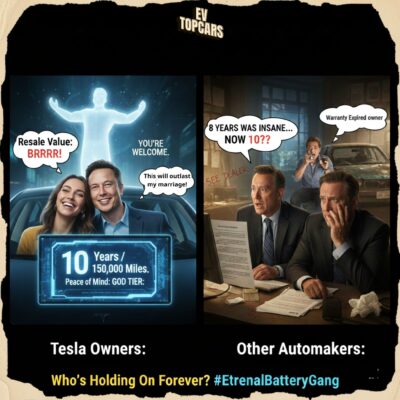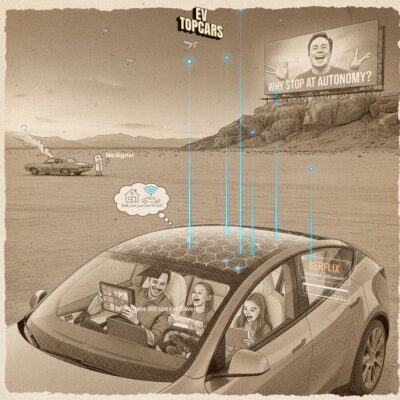The emergence of electric vehicles (EVs) has brought a
much-needed wave of innovation to the automotive industry. Tesla and Rivian are
two players testing the water, offering their respective models for consumers
in search of an all-electric driving experience. The Tesla Model X vs Rivian
R1S comparison is one that will likely capture many potential buyers’ attention
this year.
At first glance, both EVs boast impressive features and
performance capabilities worthy of excitement – from captivating designs to
powerful rigs capable of high speeds with zero emissions output. A deeper dive
into these models reveals variations in pricing options, feature sets, and
capacities for tackling tasks like long distance travel or towing
boats/trailers – factors which may well decide their success on markets
worldwide.
In this discussion, we’ll examine how both Tesla’s Model X
and Rivian’s R1S stack up against each other.
1. Performance
For many,
performance is a top reason to consider the Rivian R1S over the Tesla Model X.
The R1S has a quad-motor system that produces 835 hp and 908 lb-ft of torque
giving it superb acceleration times—0 to 60 mph in 3.0 seconds for the Long
Range model and 2.5 seconds for the Plaid trim. Meanwhile, even with its two
electric motors producing 532 hp and 713 lb-ft of torque, respectively,the Long
Range model can still only hit 0 to 60 mph in 3.8 seconds while Plaid trim
manages it in 2.5 seconds—still less than half a second behind Rivian’s
offering.
When it comes to
towing capacity too, Rivian has an edge over Model X as well thanks to its max
tow rating of 7,700 lbs compared with 5,000 lbs on offer from Tesla’s SUV flagship
product. Consequently, the R1S is becoming the more popular choice in certain
circles, notably those seeking an all-round stylish yet powerful SUV with
substantial towing capacity.
2. Range and Efficiency
The Tesla Model X
has the efficiency advantage over Rivian’s R1S, with 109 city/101 highway MPGe
compared to 73 city/65 highway. The former has the better range too, capable of
up to 360 miles on a single charge (in its Long Range trim). The R1S is no
slouch in this regard either though; it can go 314 miles on a full charge.
That said, there
are plans for Rivian to offer an upgraded version of the R1S at a later date
with an estimated range of more than 400 miles – something that may even
eclipse that of the Tesla Model X. Until then, car shoppers willing to forego
ultimate fuel economy will have much more interior space from opting for the
bigger and badder-looking R1S versus its smaller rival from across Silicon
Valley.
3. Off-Road Capabilities
The Rivian R1S is
the perfect choice for an electric SUV if you plan to take it off-road. The
quad-motor all-wheel drive system on the R1S makes it very effective for
navigating uneven terrain and its adjustable air suspension allows for ground
clearance of up to 14.9 inches. It also has many selectable drive modes
including Off Road Auto, Drift, Rock Crawl, Rally, All Purpose Sport and Tank
Mode There are even options that allow you to shift torque from one wheel to
another or lock them altogether depending on your needs.
In comparison,
the Tesla Model X offers great performance but lacks in off-roading
capabilities when compared with the Rivian R1S due its lack of high ground
clearance and limited driving modes available in Teslas software settings. With
only single motor AWD setup offering greater efficiency than power it may not
be able to match other dedicated 4X4s like the R1S for tackling rougher
terrain.
Learn More: Which is Better, the Audi e-tron GT or the Tesla Model S?
4. Suspension
The suspension on
the Rivian R1S has been described as bouncy and rolly, particularly on uneven
surfaces. This could be annoying for passengers to ride in, although it was a
great feeling on flat pavement. The drive modes are useful but don’t do enough
to save the suspension from not living up to expectations when taking tougher
roads.
On the other
hand, Tesla Model X offers a much smoother and customizable driving experience
that gives you the option of how comfortable or sporty you want your ride to
feel like. It allows drivers to feel connected with the road even when
cornering at high speeds without compromizing comfort levels and safety –
something which is key for those who enjoy more spirited journeys.
5. Entertainment and UI
The native
integration for music services in Tesla Model X like Spotify, Apple Music and
XM Radio make it easy to find new tunes while out on the road, but a major
issue people are having is changing stations or selecting favorites without too
many button pushes.
Unfortunately,
this has been an issue plaguing Tesla’s vehicles since day one. It seems as
though they never implemented some basic UI improvements to fix this problem;
something that most owners can agree needs to be improved upon if they want
their cars to provide a superior driving experience. The Rivian R1S comes with
a state-of-the-art sound system that could potentially be even better than the
one found in the Tesla Model X.
The Rivian R1S
does not appear to suffer from this flaw, so if you’re looking for an EV that
offers a great entertainment experience as well as plenty of other features
then it may be worth considering over its main competitor: the Tesla Model X.
6. Navigation
The Rivian R1S
and Tesla Model X are both capable electric SUVs with impressive specs and
features. However, when it comes to navigation, the Model X clearly wins out
amongst these two for navigation capabilities.
Tesla’s onboard
navigation system is more reliable and accurate than that of the R1S owing to
its ability to integrate information from its vast network of charging stations
into its maps. This allows drivers to easily plan trips using up-to-date
information on station locations and availability – something that the Rivian
nav system lacks in terms of detailed information or accuracy when planning a
long journey.
In addition, the
large 17″ touchscreen display available in the Model X also ensures that
navigating isn’t hindered by a small screen size like it does for some users
with select trim levels of R1S which offers an 8″ navigational display.
Learn More: Xpeng P7 Review: Does it makes the cut?
The Bottom Line
Can Rivian R1S
beat the competition of the Tesla Model X? Well, it’s complicated. Our
comparison seems to paint a picture with each electric SUV having its own
unique selling proposition.
When comparing
apples for apples, the Rivian R1S is an outright winner when compared to Tesla
Model X Long Range trim (in terms of horsepower and torque output as well as acceleration).
The story reverses itself against higher-priced Plaid trim where Model X has
better performance specifications.
Overall
advantages favoring the Rivian R1S include towing capacity, exceptional
off-road capabilities, greater storage space along with low financial burden
giving them a prized position in Van Life culture; on par with what one should
be expecting from such rugged machines. On-profit factors tilt toward Model X
with their unparalleled efficiency and range making it more attractive given
road travel scenarios.










1 Comment
Xpeng P7 Review: Does it makes the cut?
Which is Better, the Audi e-tron GT or the Tesla Model S?